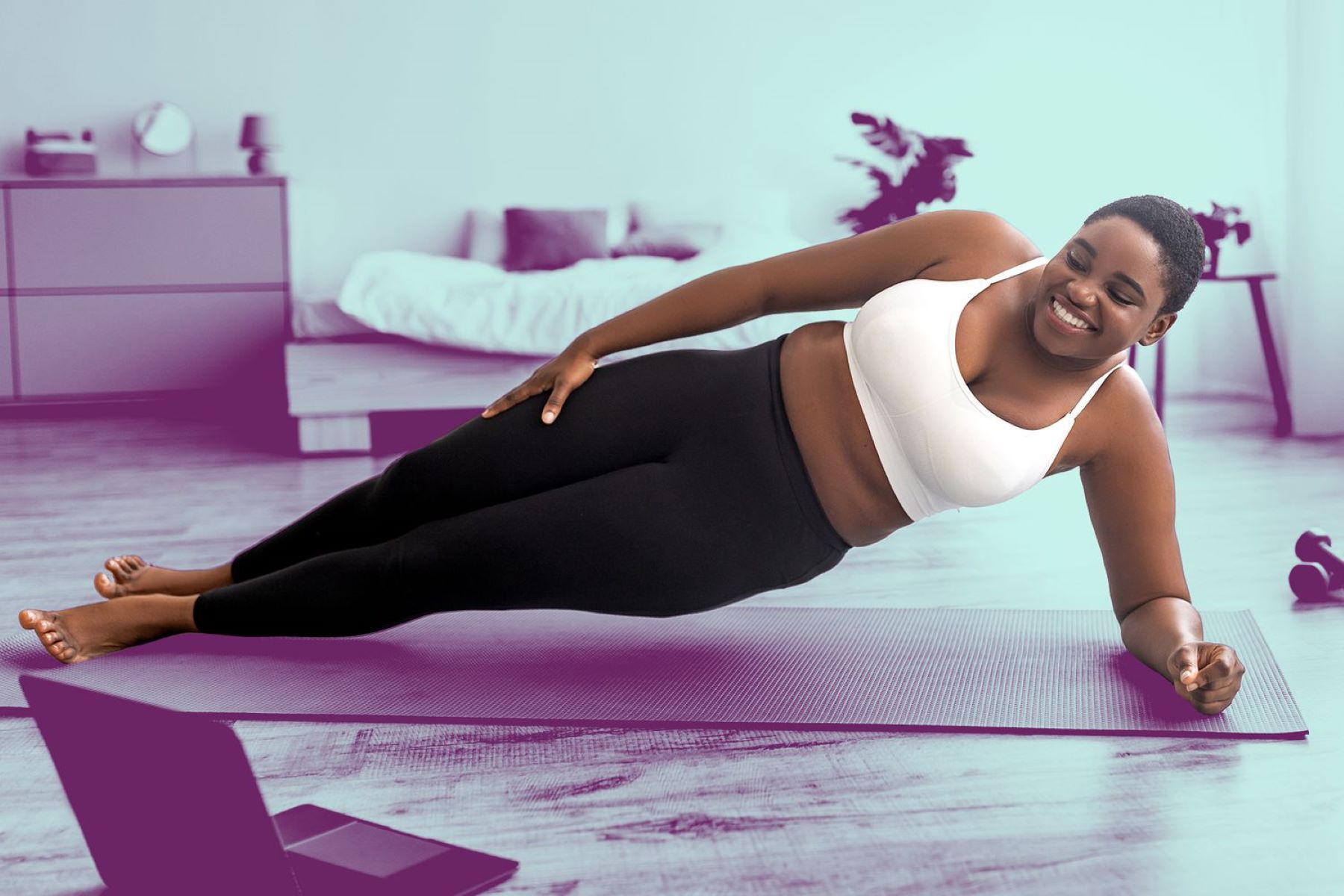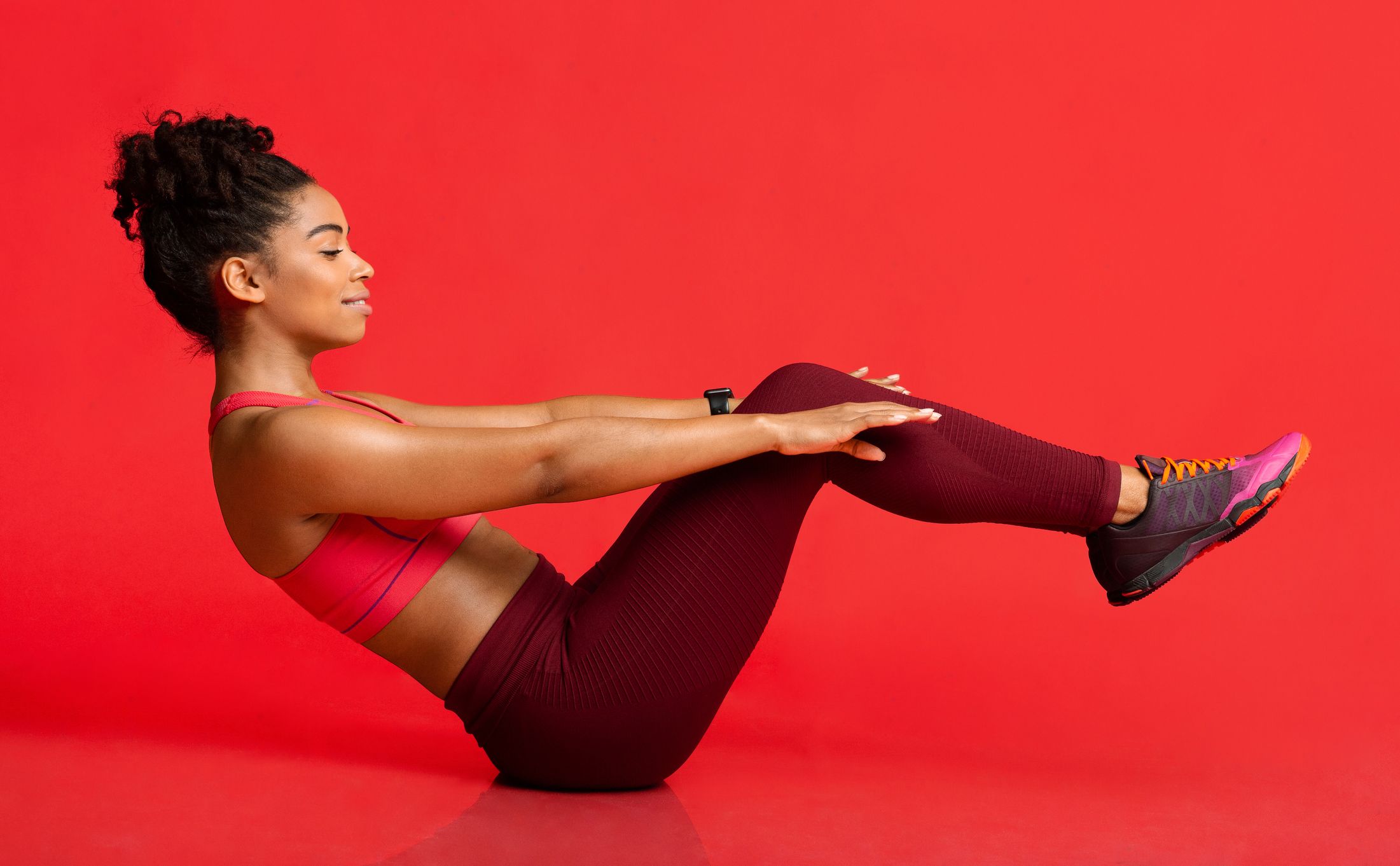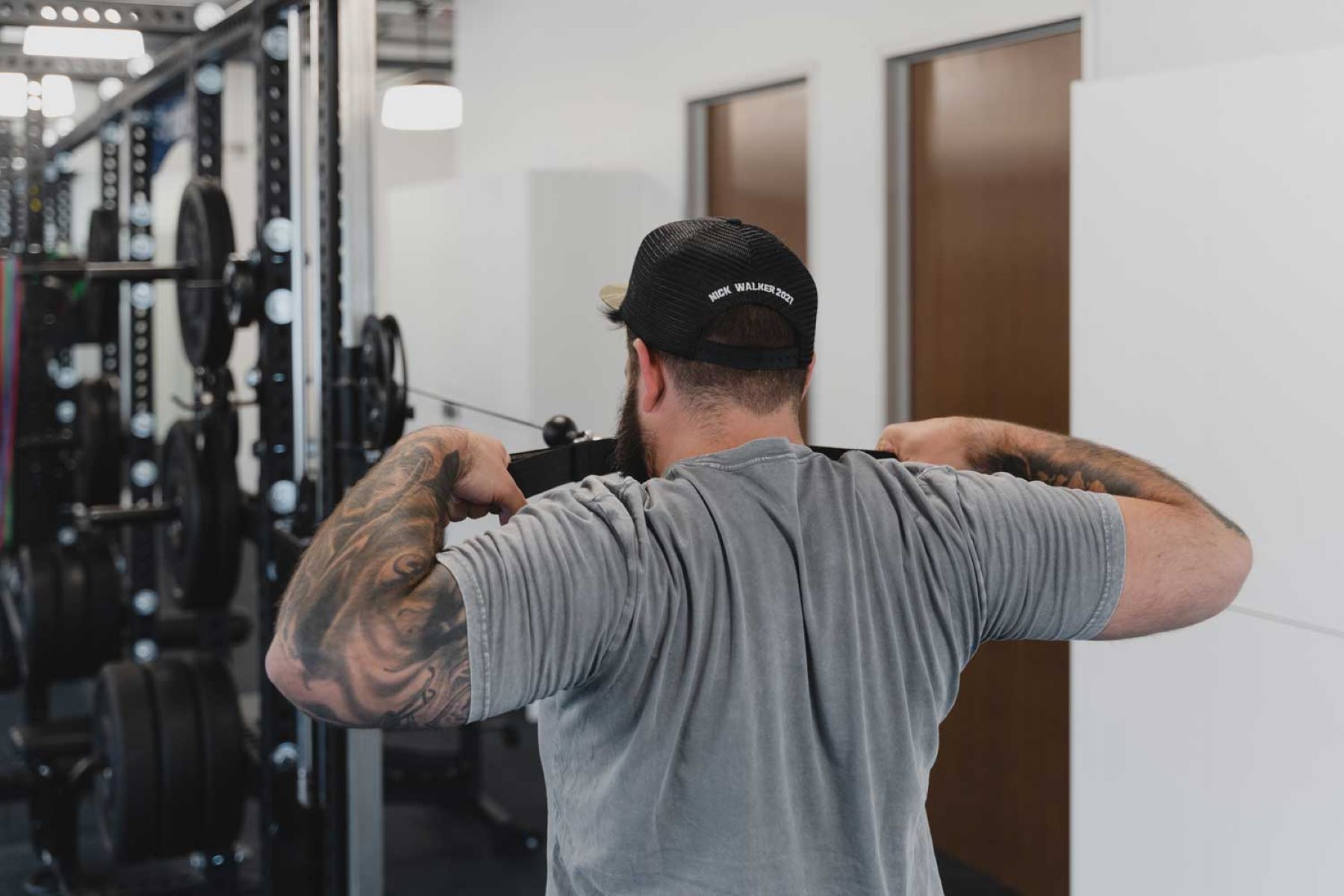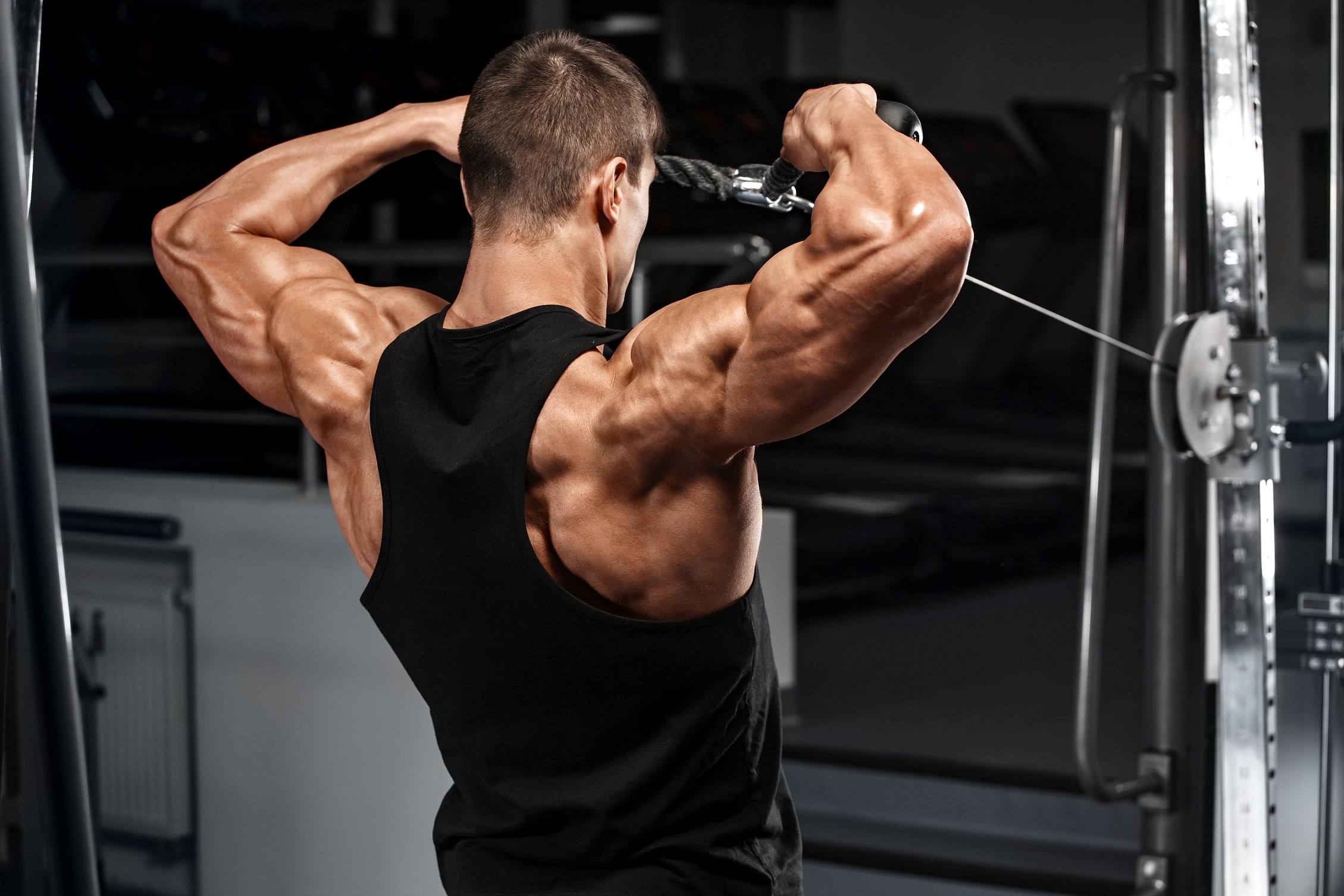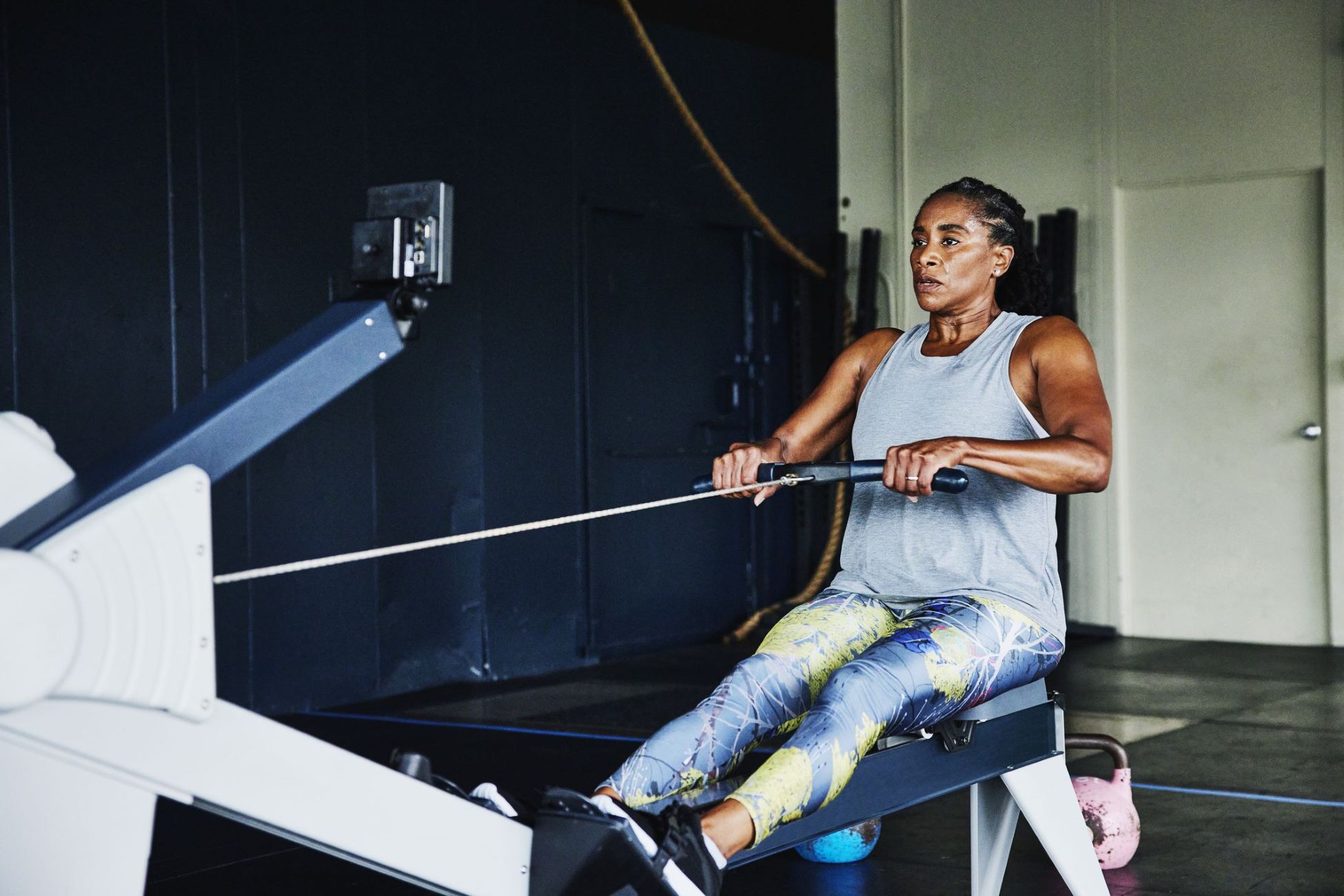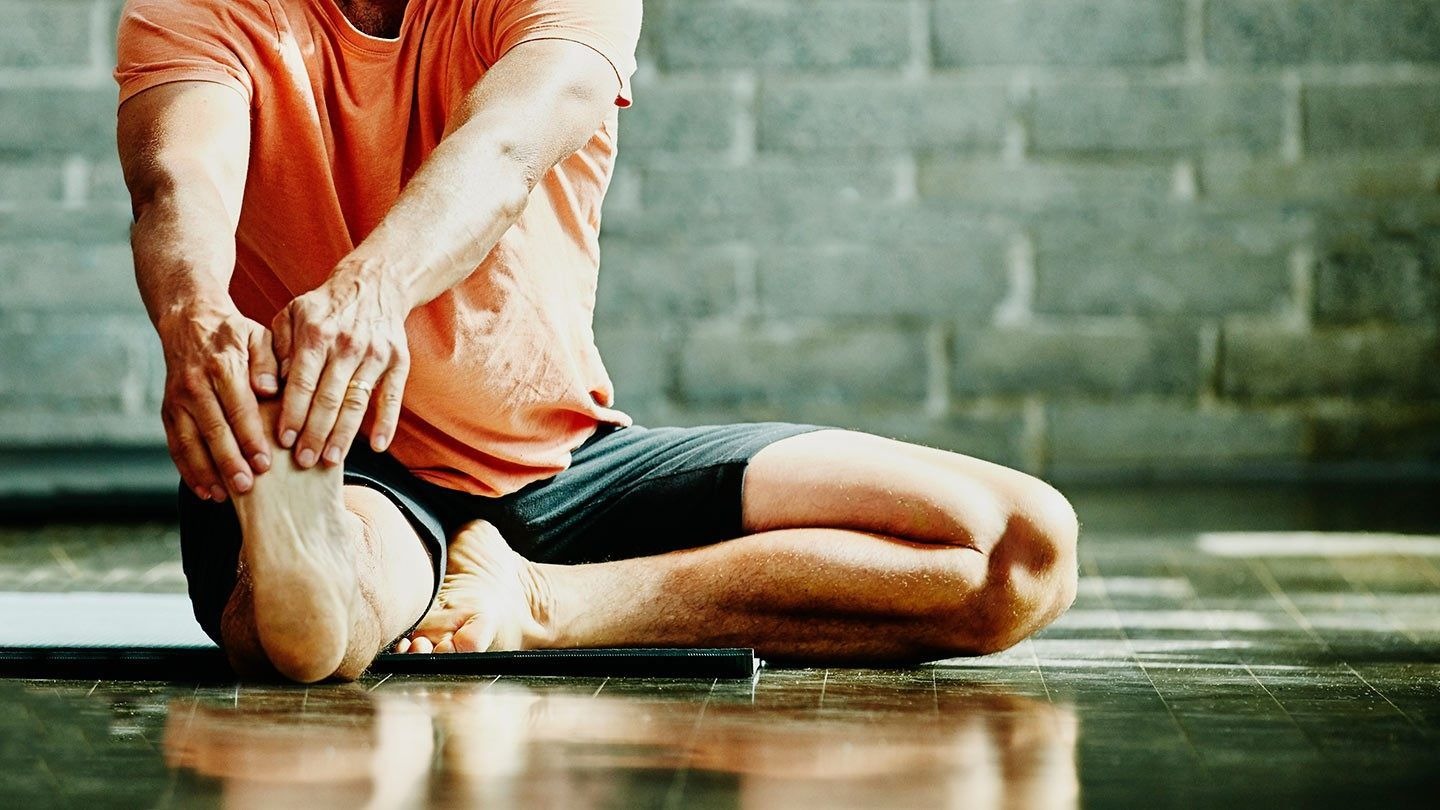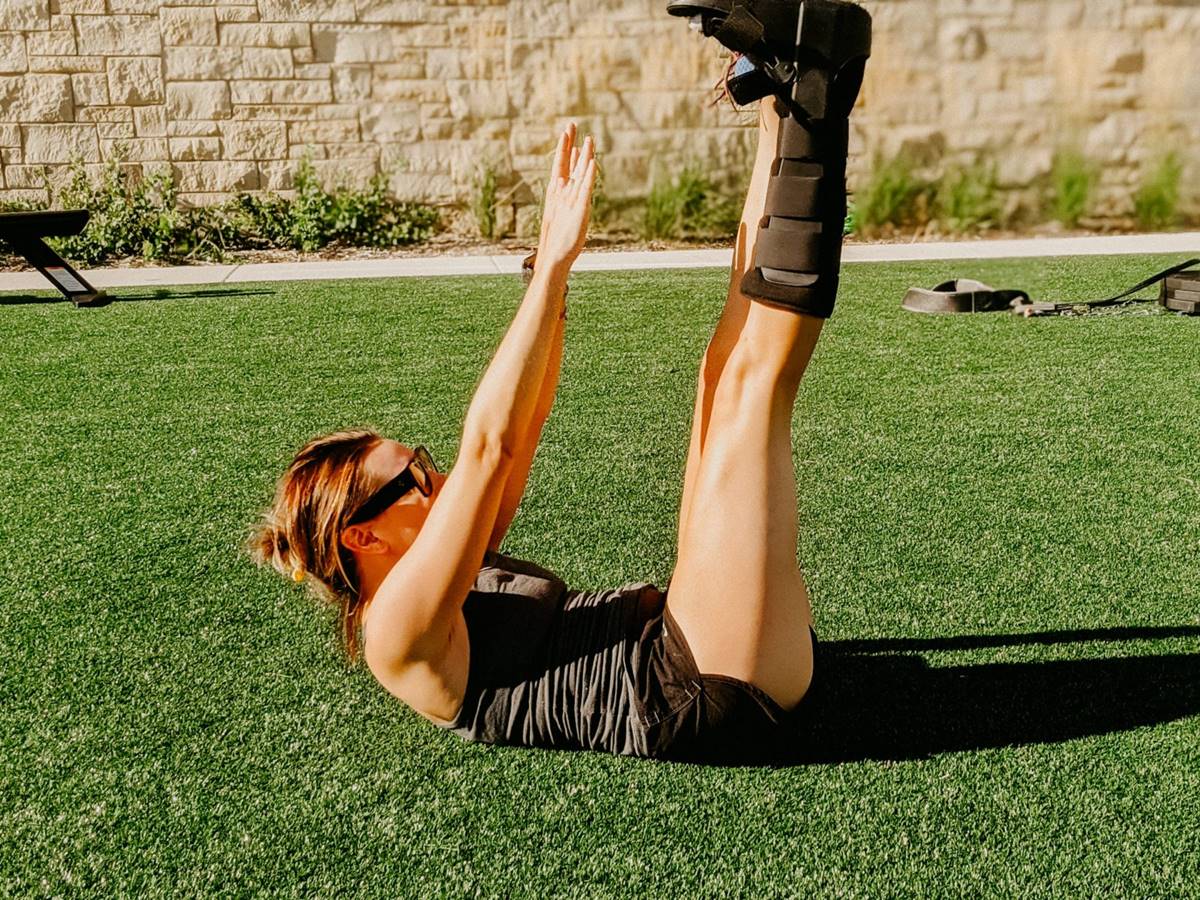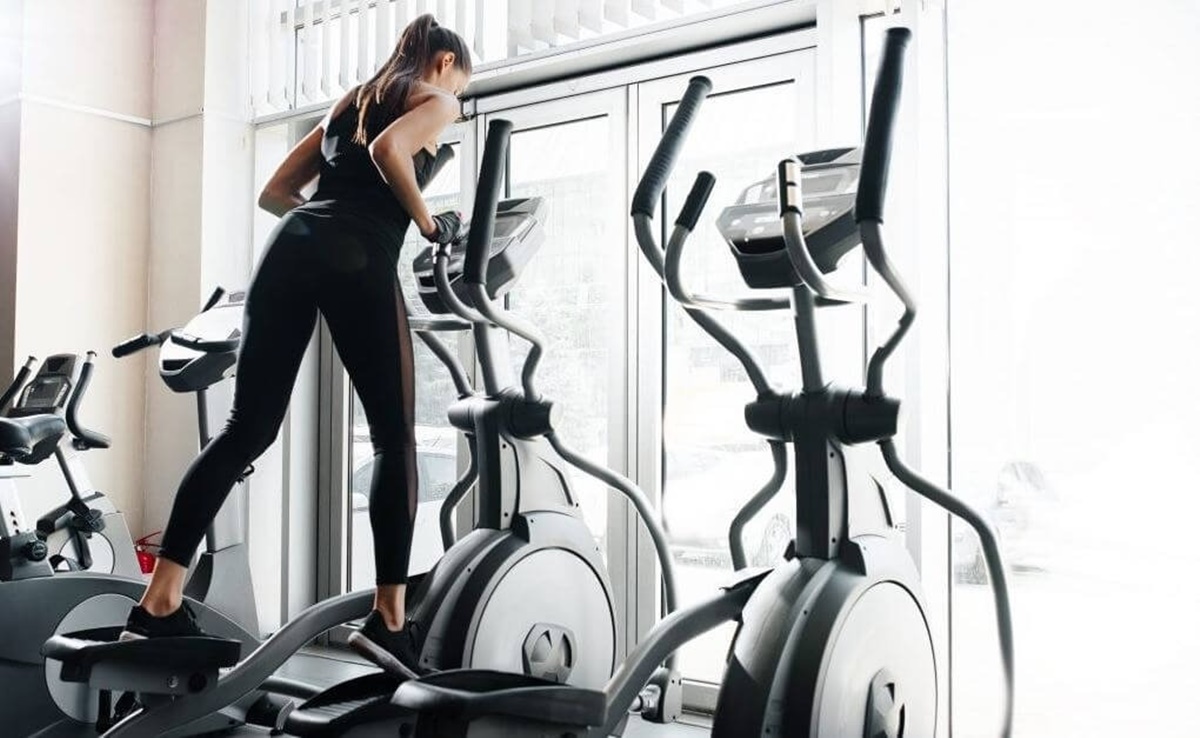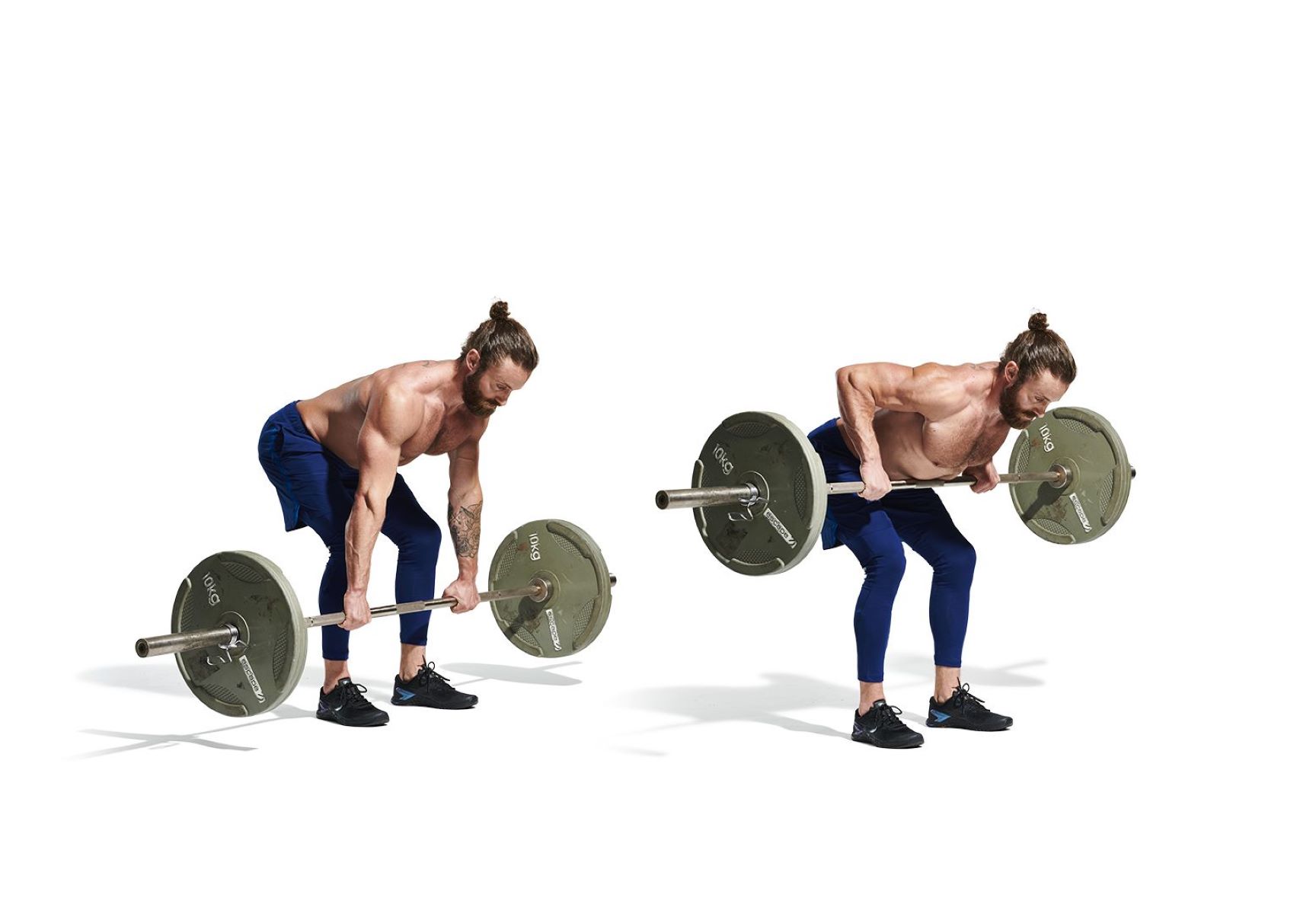

Featured
What Does Bent Over Row Workout
Modified: August 19, 2023
Increase your strength and build a stronger back with the featured Bent Over Row workout. Get step-by-step instructions and expert tips for optimal results.
Introduction
Welcome to the world of fitness! Whether you are a seasoned gym-goer or just starting on your fitness journey, it’s always important to have a well-rounded workout routine. One exercise that should definitely be a part of your repertoire is the Bent Over Row.
Over the years, the Bent Over Row has gained popularity among fitness enthusiasts due to its numerous benefits. It is a compound exercise that primarily targets the muscles of your upper back, but also engages your biceps, shoulders, and core. Not only does it help you build a strong and sculpted back, but it also has a positive impact on your overall posture and body alignment.
The Bent Over Row can be performed using various equipment like barbells, dumbbells, resistance bands, or even with just your bodyweight. It offers a wide range of variations that allow you to challenge yourself and adapt the exercise to your fitness level and goals.
In this article, we will delve into the details of the Bent Over Row exercise, including its benefits, proper form and technique, variations, common mistakes to avoid, and even provide you with a sample workout routine to get you started. So, let’s jump right in and discover how the Bent Over Row can transform your fitness journey!
What is the Bent Over Row Exercise?
The Bent Over Row is a compound exercise that primarily targets the muscles of the upper back, including the lats (latissimus dorsi), rhomboids, and traps (trapezius). It is typically performed with a barbell, but can also be done with dumbbells or other equipment.
To perform the Bent Over Row, start by standing with your feet shoulder-width apart and knees slightly bent. Hold the barbell with an overhand grip, hands slightly wider than shoulder-width apart. Hinge forward at the hips, keeping your back straight and core engaged, until your torso is parallel to the floor.
From this position, pull the barbell towards your torso, squeezing your shoulder blades together. Keep your elbows close to your body and focus on engaging your back muscles throughout the movement. Pause at the top of the contraction, then slowly lower the barbell back down to the starting position.
This exercise can also be performed with one-arm at a time, using dumbbells or kettlebells. The same form and technique applies, but with the added challenge of stabilizing your core and maintaining balance.
The Bent Over Row is an effective exercise for building a strong and sculpted back. It not only targets the muscles responsible for pulling and retracting your shoulder blades, but also works your biceps, shoulders, and core as secondary muscles. The compound nature of this exercise means that it engages multiple muscle groups simultaneously, resulting in a more efficient and effective workout.
By incorporating the Bent Over Row into your workout routine, you can improve your upper body strength, posture, and overall physique. It is a versatile exercise that can be modified to suit different fitness levels and goals. Whether you are a beginner or an advanced lifter, the Bent Over Row can be adapted to challenge and push your limits.
Benefits of Bent Over Row Workout
The Bent Over Row exercise offers a multitude of benefits that make it a valuable addition to any fitness routine. Let’s take a closer look at some of the key advantages:
- Improved Back Strength: The primary muscles targeted in the Bent Over Row, such as the lats, rhomboids, and traps, play a crucial role in maintaining a strong and stable back. Regularly performing this exercise can help strengthen these muscles, enhancing your overall back strength and stability.
- Enhanced Posture: Many individuals spend a significant amount of time sitting or hunched over electronic devices, leading to poor posture. The Bent Over Row can help counteract this by strengthening the muscles responsible for proper posture, resulting in improved alignment and reduced risk of back pain.
- Increased Upper Body Definition: Alongside building back strength, the Bent Over Row also targets the biceps, shoulders, and core. This compound movement helps develop these muscle groups, contributing to a more sculpted upper body with increased definition and muscularity.
- Functional Strength: As a compound exercise, the Bent Over Row mimics movements used in everyday activities and sports, such as lifting objects or engaging in physical tasks that require pulling. By effectively engaging multiple muscle groups, this exercise improves functional strength and enables you to perform daily tasks more efficiently.
- Improved Core Stability: The Bent Over Row requires a stable core to maintain proper form and balance. As a result, this exercise engages the deep stabilizing muscles of the core, enhancing your overall core strength and stability. A strong core is vital for overall strength and optimal performance in other exercises and activities.
- Variety and Adaptability: The Bent Over Row offers a wide range of variations to cater to different fitness levels and goals. Whether you perform it with a barbell, dumbbells, or resistance bands, or opt for single-arm variations, modifying the exercise can help you continuously challenge your muscles and prevent plateaus.
Incorporating the Bent Over Row into your workout routine can lead to noticeable improvements in back strength, posture, upper body definition, and overall functional fitness. Remember to maintain proper form and gradually increase weights and intensity to maximize the benefits and avoid injury.
Proper Form and Technique
Performing the Bent Over Row with proper form is essential to ensure safety and maximize the effectiveness of the exercise. Here’s a step-by-step guide to executing the Bent Over Row with correct technique:
- Starting Position: Stand with your feet shoulder-width apart, knees slightly bent. Hold the barbell with an overhand grip, hands slightly wider than shoulder-width apart.
- Hip Hinge: Hinge forward at the hips, keeping your back straight and core engaged. Ensure that your spine remains neutral throughout the movement, avoiding excessive rounding or arching in the lower back.
- Body Position: Your torso should be parallel to the floor, forming a straight line from your head to your tailbone. Maintain a slight bend in your knees throughout the exercise to alleviate strain on the lower back.
- Barbell Pull: With a controlled motion, pull the barbell towards your torso, leading with your elbows. Keep your elbows close to your body throughout the movement, squeezing your shoulder blades together at the top of the contraction.
- Full Range of Motion: Lower the barbell back down in a controlled manner, fully extending your arms, but maintaining tension in your back muscles. Avoid using momentum or jerking movements.
- Breathing: Inhale as you lower the barbell down, and exhale as you pull it towards your torso. Maintain a consistent and controlled breath pattern throughout the exercise.
- Core Engagement: Keep your core muscles engaged throughout the movement to provide stability and support to your spine. Avoid arching or rounding your back as you perform the exercise.
Remember, if you’re new to this exercise, start with light weights or even just your bodyweight to familiarize yourself with the movement and ensure proper form. As you progress, gradually increase the weight while maintaining proper technique.
It’s also worth noting that the Bent Over Row can be performed with different equipment or variations, such as using dumbbells, kettlebells, or resistance bands. The same principles of form and technique apply, with slight variations in hand positioning or grip.
By focusing on maintaining proper form and technique, you can effectively target the intended muscles and minimize the risk of injury. If you’re unsure about your form, consider working with a qualified fitness professional who can provide guidance and feedback as you perform the Bent Over Row.
Variations of Bent Over Row Exercise
The Bent Over Row is a versatile exercise that offers a variety of variations to keep your workout routine exciting and challenge different muscle groups. Here are some popular variations:
- Dumbbell Bent Over Row: Instead of using a barbell, hold a dumbbell in each hand and perform the rowing motion. This variation allows for more freedom of movement and can help improve muscle imbalances.
- T-Bar Row: Set up a T-bar row machine or place a barbell in a landmine attachment. Straddle the bar, bend at the hips, and grip the handles or bar. Pull the weight towards your torso, maintaining proper form. This variation places greater emphasis on the lower back and glutes.
- Single-Arm Bent Over Row: Hold a dumbbell or kettlebell in one hand and plant the opposite knee and hand on a bench or sturdy surface. Row the weight towards your torso while keeping your back straight and core engaged. This variation helps improve unilateral strength and stability.
- Underhand Grip Bent Over Row: Similar to the traditional Bent Over Row, but with an underhand grip on the bar. This grip variation targets the biceps more intensely and can provide variety to your routine.
- Resistance Band Bent Over Row: Attach a resistance band to a fixed point and step on it while holding the other end with both hands. Hinge forward at the hips and perform the rowing motion, maintaining tension in the band throughout the movement. This variation provides a different form of resistance and can be done anywhere.
- Inverted Row: Lie underneath a barbell or suspension trainer and grip it with your palms facing towards you. Keep your body in a straight line and pull your chest towards the bar, engaging your back muscles. The inverted row is a bodyweight exercise that targets the same muscles as the Bent Over Row.
These are just a few variations of the Bent Over Row exercise. Experiment with different grip widths, equipment, or angles to find what works best for you and keeps your workouts challenging and interesting.
Remember to focus on maintaining proper form and technique with each variation, as the main objectives of engaging the back muscles and promoting good posture remain the same.
Integrating a mix of different Bent Over Row variations into your routine can help target specific muscle groups, prevent plateauing, and provide a well-rounded approach to back training.
Common Mistakes to Avoid
While the Bent Over Row is a highly effective exercise, there are common mistakes that people often make. By being aware of these errors, you can ensure that you are getting the most out of your workouts and reducing the risk of injury. Here are some common mistakes to avoid:
- Rounding the Back: One of the most significant mistakes is rounding the back, especially as you lower the weight. This puts unnecessary strain on the spine and decreases the effectiveness of the exercise. Focus on maintaining a neutral spine throughout the entire movement, keeping your core engaged and your back straight.
- Using Excessive Momentum: Swinging the weight or using momentum to lift the barbell diminishes the emphasis on the targeted muscles. Instead, perform the exercise with controlled and deliberate movements to ensure that your back muscles are doing the work.
- Not Allowing for Full Range of Motion: It’s important to lower the weight fully to achieve a full range of motion and engage the desired muscles. Avoid cutting the movement short, as this limits the effectiveness of the exercise. Focus on the proper form and aim for a complete extension and contraction with each repetition.
- Neglecting Core Stability: Your core plays a crucial role in maintaining proper form during the Bent Over Row. Neglecting to engage your core muscles can lead to increased stress on the lower back and an unstable posture. Prioritize core stability throughout the exercise to ensure a solid foundation.
- Using Too Heavy of a Weight: It is essential to use a weight that you can handle with proper form and technique. Using a weight that is too heavy compromises your form and reduces the effectiveness of the exercise while increasing the risk of injury. Start with a weight you can comfortably handle and gradually increase it as your strength improves.
- Not Prioritizing Shoulder Blade Retraction: Squeezing your shoulder blades together at the top of the movement is vital for targeting the back muscles effectively. Failing to focus on this retraction can lead to an imbalance in muscle activation and hinder progress. Concentrate on initiating and maintaining proper shoulder blade retraction throughout the exercise.
Avoiding these common mistakes will not only protect you from potential injuries but also ensure that you are utilizing the Bent Over Row to its full potential. Remember to prioritize proper form, engage the targeted muscles, and gradually progress your weights and intensity over time.
Sample Bent Over Row Workout Routine
To incorporate the Bent Over Row into your workout routine, here’s a sample workout that targets your back and incorporates other exercises for a well-rounded training session:
Warm-up:
- 5-10 minutes of light cardio activity to increase blood flow and warm up your muscles.
- Perform a dynamic stretching routine that focuses on your upper body, especially your back, shoulders, and arms.
Main Workout:
- Bent Over Rows: 3 sets of 8-10 reps. Use a weight that challenges you while allowing for proper form and technique. Rest for 60 seconds between sets.
- Lat Pulldowns: 3 sets of 10-12 reps. Focus on engaging your latissimus dorsi muscles as you pull the bar towards your chest. Rest for 60 seconds between sets.
- Seated Cable Rows: 3 sets of 12-15 reps. Keep your back straight and pull the handles towards your abdomen, squeezing your shoulder blades together. Rest for 60 seconds between sets.
- Inverted Rows: 3 sets of 10-12 reps. Lie underneath a bar or suspension trainer, keep your body straight, and pull your chest towards the bar, engaging your back muscles. Rest for 60 seconds between sets.
- Reverse Flyes: 3 sets of 12-15 reps. Stand with a slight bend in your knees, hinge forward at the hips, and raise your arms out to the sides, squeezing your shoulder blades together. Rest for 60 seconds between sets.
Cool Down:
- Perform static stretches for your back, shoulders, and arms, holding each stretch for 20-30 seconds.
- Take a few minutes to focus on deep breathing and relaxation to help your body recover.
You can perform this workout routine 2-3 times per week, with at least one day of rest in between to allow for muscle recovery. Remember to listen to your body and adjust the weights and repetitions as needed. Gradually increase the weights over time as you get stronger and more comfortable with the exercises.
It’s essential to consult with a fitness professional or trainer if you are new to strength training or unsure about proper form. They can guide you through the exercises and help tailor a workout routine that aligns with your fitness goals and abilities.
Conclusion
Incorporating the Bent Over Row exercise into your workout routine can have a transformative impact on your back strength, posture, and overall physique. By targeting the muscles of your upper back, including the lats, rhomboids, and traps, the Bent Over Row helps build a strong, defined, and well-balanced back.
Throughout this article, we have explored the various aspects of the Bent Over Row, including its benefits, proper form and technique, variations, common mistakes to avoid, and even provided a sample workout routine. It’s important to remember that proper form and technique are crucial to maximize the benefits of the exercise and prevent injury. Take the time to learn and practice the correct form before increasing the weight or intensity.
Whether you’re a beginner or an experienced lifter, the versatility of the Bent Over Row allows you to adapt the exercise to your fitness level and goals. By incorporating variations such as the dumbbell Bent Over Row, T-bar Row, or single-arm Bent Over Row, you can continually challenge your muscles and prevent plateaus.
As with any exercise, it’s essential to listen to your body, adjust weights and repetitions accordingly, and prioritize rest and recovery. Consistency and progression are key to seeing improvements in strength, muscle definition, and overall fitness.
Remember, if you are new to the Bent Over Row or strength training in general, it is advisable to seek guidance from a qualified fitness professional. They can help ensure you are performing the exercise with proper form and technique, tailor a workout routine to your needs and abilities, and provide ongoing support and motivation.
So, take those weights, focus on your form, engage your back muscles, and make the Bent Over Row a staple in your fitness routine. Your back will thank you, and you’ll be well on your way to achieving a stronger, more defined physique!
